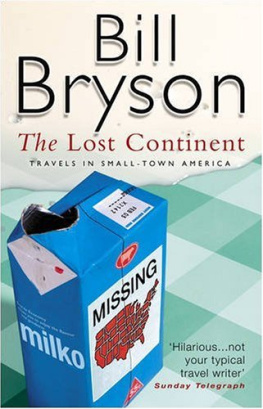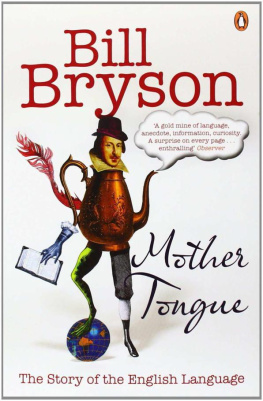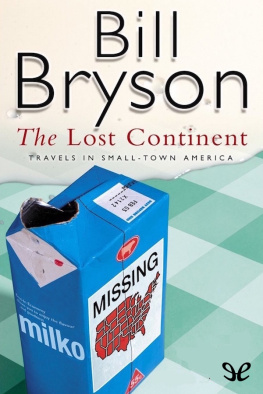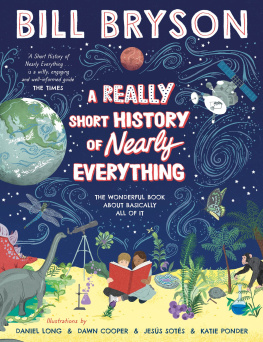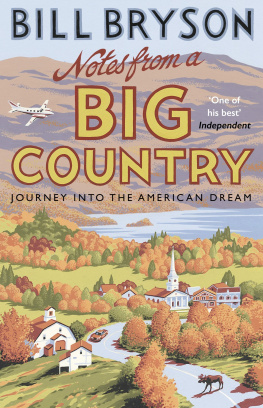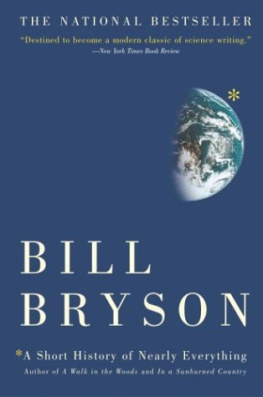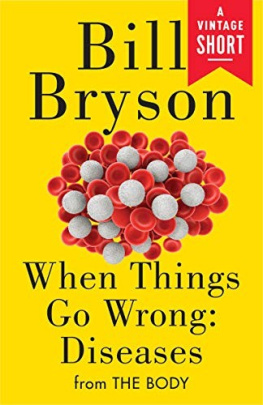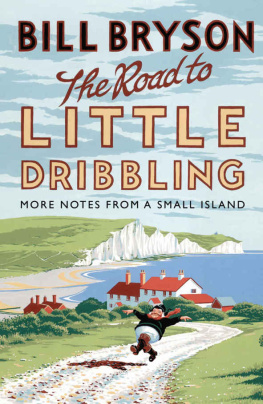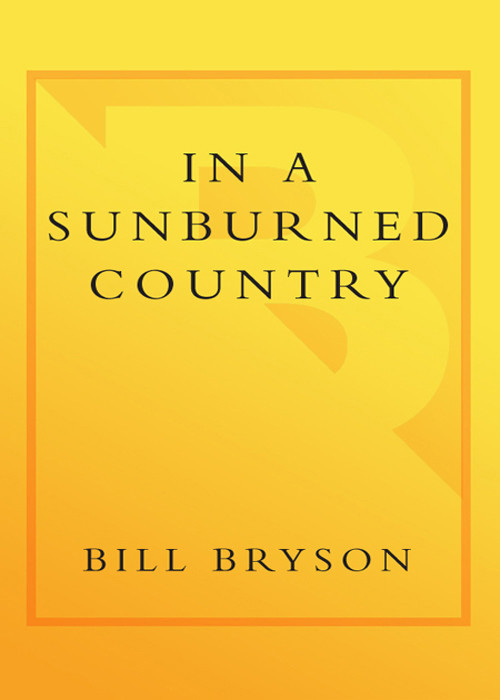Go to the Next Page to Read Chapter 7 from
Bill Brysons At Home
Coming in October 2010
An Excerpt from Bill Brysons At Home
THE DRAWING ROOM
I
If you had to summarize it in a sentence, you could say that the history of private life is a history of getting comfortable slowly. Until the eighteenth century, the idea of having comfort at home was so unfamiliar that no word existed for the condition. Comfortable meant merely capable of being consoled. Comfort was something you gave to the wounded or distressed. The first person to use the word in its modern sense was the writer Horace Walpole, who remarked in a letter to a friend in 1770 that a certain Mrs. White was looking after him well and making him as comfortable as is possible. By the early nineteenth century, everyone was talking about having a comfortable home or enjoying a comfortable living, but before Walpoles day no one did.
Nowhere in the house is the spirit (if not always the actuality) of comfort better captured than in the curiously named room in which we find ourselves now, the drawing room. The term is a shortening of the much older withdrawing room, meaning a space where the family could withdraw from the rest of the household for greater privacy, and it has never settled altogether comfortably into widespread English usage. For a time in the seventeenth and eighteenth centuries, drawing room was challenged in more refined circles by the French salon, which was sometimes anglicized to saloon, but both those words gradually became associated with spaces outside the home, so that saloon came first to signify a room for socializing in a hotel or on a ship, then a place for dedicated drinking, and finally, and a little unexpectedly, a type of automobile. Salon, meanwhile, became indelibly attached to places associated with artistic endeavors before being appropriated (from about 1910) by providers of hair care and beauty treatments. Parlor, the word long favored by Americans for the main room of the home, has a kind of nineteenth-century frontier feel to it, but in fact is the oldest word of all. It was first used in 1225, referring to a room where monks could go to talk (it is from the French parler, to speak), and was extended to secular contexts by the last quarter of the following century.
Drawing room is the name used by Edward Tull on his floorplan of the Old Rectory, and almost certainly is the term employed by the well-bred Mr. Marsham, though he was probably in a minority even then. By mid-century it was being supplanted in all but the most genteel circles by sitting room, a term first appearing in English in 1806. A later challenger was lounge, which originally signified a type of chair or sofa, then a jacket for relaxing in, and finally, from 1881, a room. In America, living room came into being in about 1870, and quite rapidly drove parlor out of use there, but failed to catch on elsewhere.
Assuming he was a conventional sort of fellow, Mr. Marsham would have strived to make his drawing room the most comfortable room in the house, with the softest and finest furnishings. In practice, however, it was probably anything but comfortable for much of the year, since it has just one fireplace, which could do no more than warm a small, central part of the room. Even with a good fire going, I can attest, it is possible in the depths of winter to stand across the room and see your breath.
Though the drawing room became the focus of comfort in the home, the story doesnt actually start there; it doesnt start in the house at all. It starts outdoors, a century or so before Mr. Marshams birth, with a simple discovery that would make landed families like his very rich and allow him one day to build himself a handsome rectory. The discovery was merely this: land didnt have to be rested regularly to retain its fertility. It was not the most staggering of insights, but it changed the world.
Traditionally, most English farmland was divided into long strips called furlongs and each furlong was left fallow for one season in every threesometimes one season in twoso that it could recover its ability to produce healthy crops. This meant that in any given year at least one-third of the nations farmland stood idle. In consequence, there wasnt sufficient feed to keep large numbers of animals alive through the winter, so landowners had no choice but to slaughter most of their stock each autumn and face a long, lean period till spring.
Then English farmers discovered something that Dutch farmers had known for a long time: if turnips, clover, or one or two other amenable crops were sown on the idle fields, they miraculously refreshed the soil and produced a bounty of winter fodder into the bargain. It was the infusion of nitrogen that did it, though no one would understand that for nearly two hundred years. What was understood, and very much appreciated, was that crop rotation transformed agricultural fortunes dramatically. Moreover, because more animals lived through the winter, they produced heaps of additional manure, and these glorious, gratis ploppings enriched the soil even further.
It is hard to exaggerate what a miracle all this seemed. Before the eighteenth century, agriculture in Britain lurched from crisis to crisis. An academic named W. G. Hoskins calculated (in 1964) that between 1480 and 1700, one harvest in four was bad, and almost one in five was catastrophically bad. Now, thanks to the simple expedient of crop rotation, agriculture was able to settle into a continuous, more or less reliable prosperity. It was this long golden age that gave so much of the countryside the air of prosperous comeliness it enjoys still today, and allowed the likes of Mr. Marsham to embrace that gratifying new commodity: comfort.
Farmers also benefited from a new wheeled contraption invented in about 1700 by Jethro Tull, a farmer and agricultural thinker in Berkshire. Called a seed drill, it allowed seeds to be planted directly into the soil rather than broadcast by hand. Seed was expensive, and Tulls new drill reduced the amount needed from three or four bushels per acre to under one; and because the seeds were planted at even depths in neat rows, more of them sprouted successfully, so yields improved dramatically, too, from between twenty and forty bushels an acre to as much as eighty.
The new vitality was also reflected in breeding programs. Nearly all the great cattle breedsJersey, Guernsey, Hereford, Aberdeen Angus, Ayrshirewere eighteenth-century creations. Sheep likewise were successfully manipulated to become the bundles of unnatural fleeciness we see today. A medieval sheep gave about a pound and a half of wool; re-engineered eighteenth-century sheep gave up to nine pounds. Underneath all that lovely fleece, sheep were gratifyingly plumper, too. Between 1700 and 1800, the average weight of sheep sold at Smithfield Market in London more than doubled, from thirty-eight pounds to eighty. Beef cattle expanded similarly. Dairy yields went up, too.
All this was not without cost, however. To make the new systems of production work, it was necessary to amalgamate small fields into large ones and move the peasant farmers off the land. This enclosure movement, in which small fields that had formerly supported many were converted into much larger enclosed fields that enriched a few, made farming immensely lucrative for those with large holdingsand soon in many areas that was almost the only kind of holding there was. Enclosure had been going on slowly for centuries, but it gathered pace between 1750 and 1830, when some six million acres of British farmland were enclosed. Enclosure was hard on the displaced peasant farmers, but it did leave them and their descendants conveniently available to move to towns and become the toiling masses of the new Industrial Revolutionwhich was also just beginning and was funded to a very large extent by the surplus wealth enjoyed by the ever-richer landowners.


